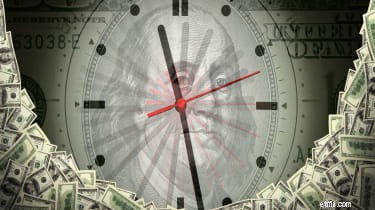
জন ডি. রকফেলার বলেছিলেন যে, "একমাত্র জিনিস যা আমাকে আনন্দ দেয় তা হল আমার লভ্যাংশ আসতে দেখা।" আয়ের বিনিয়োগকারীরা আশা করি সবচেয়ে ধনী আমেরিকানদের তুলনায় পূর্ণ সংবেদনশীল জীবনযাপন করবে, তবে রকফেলারের মতো তাদের লভ্যাংশের দীর্ঘমেয়াদী শক্তি বোঝা উচিত।
শুধু বিগত অর্ধশতকের সেরা স্টকগুলি দেখুন। প্রতিটি ক্ষেত্রে কিন্তু একটি - যা একটি খুব বিশেষ ক্ষেত্রে, প্রকৃতপক্ষে - লভ্যাংশ আয় দীর্ঘ যাত্রায় উচ্চতর রিটার্ন তৈরির জন্য গুরুত্বপূর্ণ ছিল৷
S&P Dow Jones Indices সম্প্রতি স্ট্যান্ডার্ড অ্যান্ড পুওরস 500-স্টক সূচকে 25টি স্টকের একটি তালিকা প্রকাশ করেছে যা গত 50 বছরে সেরা রিটার্ন জেনারেট করেছে। শুধুমাত্র মূল্য বৃদ্ধির মাধ্যমে, এই স্টকগুলির মধ্যে অনেকগুলিই বার্ষিক আয়ের কম রিটার্ন প্রদান করে৷
মোট-রিটার্ন ভিত্তিতে (মূল্য বৃদ্ধি এবং লভ্যাংশ), যাইহোক, এই স্টকগুলি বিস্তৃত বাজারকে উড়িয়ে দিয়েছে। গত 50 বছরে, S&P 500 9.5% লভ্যাংশ সহ একটি বার্ষিক রিটার্ন জেনারেট করেছে। গত অর্ধ-শতকের সেরা স্টক দ্বারা উত্পন্ন রিটার্নের তুলনায় এটি চিনাবাদাম৷
বিগত 50 বছরের সেরা স্টকগুলি দেখুন এবং আপনি দেখতে পাবেন যে তারা ওয়ারেন বাফেট (ইঙ্গিত, ইঙ্গিত) না হলে, দীর্ঘমেয়াদী বিনিয়োগকারীদের সম্ভবত রকফেলারের মতো লভ্যাংশের লোভ করা উচিত৷
ডেটা 4 জানুয়ারী, 2019 পর্যন্ত, যদি না অন্যথায় উল্লেখ করা হয়। সবচেয়ে সাম্প্রতিক ত্রৈমাসিক অর্থপ্রদানের বার্ষিকীকরণ এবং শেয়ারের মূল্য দ্বারা ভাগ করে লভ্যাংশের ফলন গণনা করা হয়। S&P Dow Jones Indices দ্বারা প্রদত্ত ঐতিহাসিক বার্ষিক রিটার্ন। জ্যাকস ইনভেস্টমেন্ট রিসার্চ দ্বারা প্রদান করা বিশ্লেষকদের রেটিং।
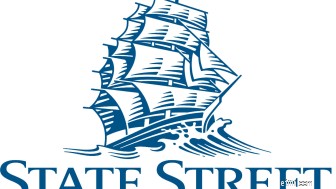
স্টেট স্ট্রিট (STT, $64.19) BlackRock (BLK) এবং ভ্যানগার্ডের পরে বিশ্বের তৃতীয় বৃহত্তম সম্পদ ব্যবস্থাপক, যার ব্যবস্থাপনায় $2.8 ট্রিলিয়ন সম্পদ রয়েছে। বোস্টন-ভিত্তিক ফার্মটি সম্ভবত তার SPDR এক্সচেঞ্জ-ট্রেডেড ফান্ড (ETFs) এর দীর্ঘ তালিকার জন্য সবচেয়ে বেশি পরিচিত। প্রকৃতপক্ষে, SPDR S&P 500 ETF (SPY) হল বাজারের সবচেয়ে বড় ETF উভয় সম্পদ ($243.3 বিলিয়ন) এবং গড় দৈনিক আয়তন (131.8 মিলিয়ন)।
ফার্মটি 1700-এর দশকের শেষের দিকে তার শিকড়ের সন্ধান করে এবং 1891 সালে স্টেট স্ট্রিট ডিপোজিট অ্যান্ড ট্রাস্ট কোং হিসাবে কাজ শুরু করে। আর্থিক পরিষেবা শিল্পের বাকি অংশের মতো, এসএসটি গত 50 বছর পরিবর্তনের প্রায় চিরস্থায়ী অবস্থায় কাটিয়েছে, সংকলন অধিগ্রহণ, স্বভাব এবং অন্যান্য চুক্তির একটি চকচকে রেকর্ড। এই সমস্ত কিছুর মধ্যে, ফার্মটি প্রায় 13.7% বার্ষিক মোট রিটার্ন প্রদান করতে সক্ষম হয়েছে।
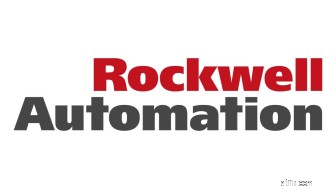
রকওয়েল অটোমেশন (ROK, $150.13) সফ্টওয়্যার এবং সরঞ্জাম তৈরি এবং বিকাশ করে যা কোম্পানিগুলি তাদের কারখানাগুলিকে স্বয়ংক্রিয় করতে ব্যবহার করে। অতি সম্প্রতি, কোম্পানিটি "ইন্টারনেট অফ থিংস"-এ একটি শীর্ষস্থানীয় হয়ে উঠেছে - এর ইথারনেট-সক্ষম Logix সিস্টেম ফ্যাক্টরি ফ্লোর থেকে ম্যানেজারদের অনলাইনে সিস্টেম অ্যাক্সেস করতে ডেটা সংগ্রহ, পর্যবেক্ষণ এবং বিশ্লেষণ প্রদান করে৷
কোম্পানীটি 1903-এ এর শিকড়গুলিকে চিহ্নিত করে তবে 1990 এর দশকে এটির বর্তমান রূপটি ধারণ করে, যখন এটি রকওয়েল সফ্টওয়্যার, পূর্বোক্ত লজিক্স কন্ট্রোল প্ল্যাটফর্ম এবং এর ইন্টিগ্রেটেড আর্কিটেকচার সিস্টেম চালু করার মাধ্যমে সফ্টওয়্যার ব্যবসায় প্রবেশ করে। 2002 সালে, কোম্পানিটি রকওয়েল কলিন্স (COL) এভিওনিক্স বিভাগ থেকে বেরিয়ে আসে।
ROK-এর লভ্যাংশের ইতিহাস কয়েক দশক আগে প্রসারিত, এবং এটি 2010 সাল থেকে বছরে গড়ে 14% করে তার পে-আউট তুলেছে। সেই আয়ের প্রবাহ গত 50 বছরে স্টকের বার্ষিক মোট রিটার্নে প্রায় 7 শতাংশ পয়েন্ট যোগ করতে সাহায্য করেছে।

বোয়িং (BA, $327.08), 1987 সাল থেকে একটি ডাও উপাদান, বৃহৎ বাণিজ্যিক বিমানের জন্য ডুপলির অর্ধেক গঠন করে। শুধুমাত্র ইউরোপের এয়ারবাস (EADSY) বড় জেট তৈরিতে একই স্তরে এর সাথে প্রতিযোগিতা করে।
কিন্তু বোয়িং শুধু বাণিজ্যিক বিমান চলাচলের চেয়ে অনেক বেশি। কোম্পানিটি একটি প্রধান প্রতিরক্ষা ঠিকাদার, রকেট থেকে স্যাটেলাইট থেকে শুরু করে অসপ্রে-এর মতো সামরিক টিল্ট-রোটার বিমান পর্যন্ত সবকিছু তৈরি করে। বোয়িং-এর ইতিহাস এক শতাব্দী আগে পৌঁছেছে, কিন্তু বাণিজ্যিক বিমান চলাচলের বিস্ফোরক বৃদ্ধির সাথে দ্বিতীয় বিশ্বযুদ্ধ-পরবর্তী সময়ে এটি প্রকৃতপক্ষে তার নিজস্ব রূপ লাভ করে।
বোয়িং-এর লভ্যাংশ বৃদ্ধির ধারা দীর্ঘ নয় - এটি শুধুমাত্র 2012-এর সময়কার - তবে মহাকাশ দৈত্য 20 বছরেরও বেশি সময় ধরে নিরবচ্ছিন্ন অর্থ প্রদান করেছে৷ এই বড় ব্লু চিপটি শুধু বিগত 50 বছরের সেরা স্টকগুলির মধ্যে একটি নয়, এটি সর্বকালের সেরা স্টকগুলির মধ্যে একটি৷

ইকুইফ্যাক্স (EFX, $94.25) Experian (EXPGY) এবং TransUnion (TRU) সহ বিগ থ্রি ভোক্তা ক্রেডিট রিপোর্টিং সংস্থাগুলির মধ্যে একটি, বেশিরভাগই সম্প্রতি ভুল কারণে খবরে এসেছে৷ 2017 সালে, কোম্পানিটি প্রকাশ করেছে যে হ্যাকাররা প্রায় 146 মিলিয়ন গ্রাহকের ব্যক্তিগত ডেটাতে অ্যাক্সেস পেয়েছে। চুরি হওয়া তথ্যের মধ্যে রয়েছে নাম, সামাজিক নিরাপত্তা নম্বর, জন্ম তারিখ, ঠিকানা এবং ড্রাইভার লাইসেন্স নম্বর। গত বছর, কোম্পানী বলেছে যে এটি অতিরিক্ত 2.4 মিলিয়ন গ্রাহক ডেটা লঙ্ঘনের দ্বারা প্রভাবিত হয়েছে।
কেলেঙ্কারির মধ্যে হারিয়ে যাওয়া এই সত্য যে EFX স্টক দীর্ঘমেয়াদী বিনিয়োগকারীদের জন্য একটি স্থির আউটপারফর্মার হয়েছে। কয়েক দশকের লভ্যাংশ, এবং টানা সাত বছর লভ্যাংশ বৃদ্ধি, রিটার্ন বাড়াতে সাহায্য করেছে।
বিশ্লেষকরা প্রধানত ইএফএক্স-এর সামনের সম্ভাবনার বিষয়ে উৎসাহী। জ্যাকস দ্বারা জরিপ করা 12 জন বিশ্লেষকের মধ্যে, সাতজন স্টককে "স্ট্রং বাই" এ রেট দিয়েছেন, চারজনের কাছে এটি "হোল্ড" এ রয়েছে এবং একজন বলেছেন "বিক্রয়।"
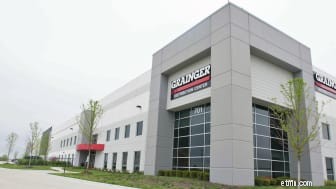
W.W. গ্রেঞ্জার (GWW, $279.13) সবই স্থির এবং ক্রমবর্ধমান লভ্যাংশ সম্পর্কে। প্রকৃতপক্ষে, কোম্পানিটি নিজেকে S&P ডিভিডেন্ড অ্যারিস্টোক্র্যাটস-এর মধ্যে গণনা করে - যে স্টকগুলি অন্তত 25 বছর ধরে প্রতি বছর তাদের লভ্যাংশ বাড়িয়েছে।
গ্রেঞ্জারের সেক্সি ব্যবসা নেই। এটি শিল্প সরঞ্জাম এবং সরঞ্জাম বিক্রি করে এবং অন্যান্য পরিষেবা প্রদান করে যেমন কোম্পানিগুলিকে ইনভেন্টরি পরিচালনা করতে সহায়তা করে। কিন্তু এটা একটা স্থির। 2019 সালে রাজস্ব 6.3% হওয়ার পূর্বাভাস দেওয়া হয়েছে। এদিকে, থমসন রয়টার্সের তথ্য অনুসারে, আগামী পাঁচ বছরের জন্য আয় প্রায় 14% গড় বার্ষিক গতিতে বৃদ্ধি পাবে বলে পূর্বাভাস দেওয়া হয়েছে।
আয়-মনস্ক বিনিয়োগকারীদের জন্য সবচেয়ে গুরুত্বপূর্ণ, Grainger 46 বছর ধরে প্রতি বছর তার পে-আউট তুলে নিয়েছে।

1935 সালে প্রতিষ্ঠিত, টাইসন ফুডস (TSN, $55.16) বিশ্বের দ্বিতীয় বৃহত্তম মুরগির মাংস, গরুর মাংস এবং শুকরের মাংস উৎপাদনকারীতে পরিণত হয়েছে। নামের পণ্যগুলি ছাড়াও, কোম্পানির পোর্টফোলিওতে জিমি ডিন, হিলশায়ার ফার্ম, সারা লি, বল পার্ক, রাইট ব্র্যান্ড, আইডেলস এবং স্টেট ফেয়ারের মতো ব্র্যান্ডগুলি অন্তর্ভুক্ত রয়েছে৷
বছরের পর বছর ধরে কোম্পানির বেশিরভাগ বৃদ্ধি অধিগ্রহণের মাধ্যমে হয়েছে। অতি সম্প্রতি, আগস্ট 2018-এ, টাইসন ফাস্ট-ফুড শিল্পে প্রোটিনের সরবরাহকারী Keystone Foods-এর $2.2 বিলিয়ন অধিগ্রহণের ঘোষণা দিয়েছেন। প্রকৃতপক্ষে, এটি ম্যাকডোনাল্ডস (এমসিডি) কে তার চিকেন নাগেটসের জন্য গ্রাহক হিসাবে গণ্য করে।
কয়েক দশকের লভ্যাংশ এবং অবিচ্ছিন্নভাবে ক্রমবর্ধমান শেয়ারের মূল্য TSN কে গত 50 বছরে 14% এর বেশি বার্ষিক মোট রিটার্ন প্রদান করতে দেয়।

হলিফ্রন্টিয়ার (HFC, $51.72), পাঁচটি রাজ্যে অপারেশন সহ একটি তেল শোধনাগার, এটির শিকড়গুলিকে 1947 সালের দিকে চিহ্নিত করে৷ এর আধুনিক অবতারটি 2011 সালে হলি কর্পোরেশন এবং ফ্রন্টিয়ার অয়েলের একীকরণের মাধ্যমে গঠিত হয়েছিল৷
50 বছর পিছিয়ে যাওয়া মূল সত্তার শেয়ারহোল্ডাররা নিজেদের জন্য ভালো করেছেন। শেয়ারগুলি লভ্যাংশে ফ্যাক্টরিংয়ের পরে বার্ষিক মোট 14% এর বেশি রিটার্ন তৈরি করেছে। তেলের দামে দুর্বলতার কারণে স্বল্প মেয়াদে নামটি নিয়ে ঠাণ্ডা বিশ্লেষকরা। জ্যাকস দ্বারা জরিপ করা নয়জন বিশ্লেষকের মধ্যে একজন এইচএফসিকে "কিনুন" বলে এবং ছয়জনের কাছে এটি "হোল্ড"-এ রয়েছে। বাকি দুটি রেট শেয়ার “সেল” এ।

ইলিনয় টুল কাজ করে (ITW, $127.18) হল আর একটি ডিভিডেন্ড অ্যারিস্টোক্র্যাট যা গত 50 বছরের সেরা স্টকের তালিকা তৈরি করেছে৷
1912 সালে প্রতিষ্ঠিত, ITW নির্মাণ পণ্য, গাড়ির যন্ত্রাংশ, রেস্টুরেন্টের সরঞ্জাম এবং আরও অনেক কিছু তৈরি করে। যদিও ITW নামের ব্র্যান্ডের অধীনে অনেক পণ্য বিক্রি করে, এটি ফস্টার রেফ্রিজারেটর, ACME প্যাকেজিং সিস্টেম এবং উলফ রেঞ্জ কোম্পানি সহ ব্যবসা পরিচালনা করে।
বাণিজ্য-যুদ্ধের আশঙ্কা, একটি শক্তিশালী ডলার এবং বৈশ্বিক প্রবৃদ্ধির উদ্বেগ কিছু বিশ্লেষককে স্বল্প মেয়াদে নামটির বিষয়ে আরও সতর্ক করে তুলেছে। Zacks দ্বারা জরিপ করা 13 জন বিশ্লেষকের মধ্যে, চারজনের কাছে "স্ট্রং বাই" এ ITW আছে, সাতজন একে "হোল্ড" বলে এবং দুজন বলেছেন এটি একটি "স্ট্রং সেল"।
Illinois Tool Works আগস্ট 2018-এ তার লভ্যাংশে 28% বৃদ্ধির ঘোষণা করেছে, যা কোম্পানির টানা 55তম বছরে পেআউট বাড়ানোর জন্য ভালো৷

ইউ.এস. ব্যানকর্প (USB, $46.83) হল দেশের সর্ববৃহৎ আঞ্চলিক ব্যাঙ্ক, এবং সর্বকালের সর্বশ্রেষ্ঠ মূল্যবান বিনিয়োগকারীকে অনুসরণ করে এমন যে কেউ বিস্ময়কর নয়।
ওয়ারেন বাফেট, বার্কশায়ার হ্যাথাওয়ে (BRK.B) এর সিইও এবং চেয়ারম্যান, ইউএসবি-তে তার কোম্পানির অংশীদারিত্বের সাথে ক্রমাগত যোগ করে চলেছেন। ওমাহার ওরাকল তৃতীয় ত্রৈমাসিকে সম্পদের ভিত্তিতে দেশের পঞ্চম বৃহত্তম ব্যাঙ্কে আরও 9.8 মিলিয়ন শেয়ার কিনেছে। বার্কশায়ার হ্যাথাওয়ে হল ইউএস ব্যানকর্পের সবচেয়ে বড় শেয়ারহোল্ডার যার বকেয়া সমস্ত শেয়ারের 7.7%।
ইউএস ব্যানকর্প 2011 সাল থেকে প্রতি বছর তার লভ্যাংশ বাড়িয়েছে।

শেরউইন-উইলিয়ামস (SHW, $390.47), একজন ডিভিডেন্ড অ্যারিস্টোক্র্যাট, একজন দীর্ঘ সময়ের আউটপারফর্মার যে তার উচ্চাকাঙ্ক্ষা হারায়নি।
2017 সালে, কোম্পানিটি বিশ্বের বৃহত্তম পেইন্ট, লেপ এবং গৃহ-উন্নতি সংস্থাগুলির একটি তৈরি করতে ভালস্পারের $11 বিলিয়ন অধিগ্রহণ সম্পন্ন করেছে। চুক্তির সুফল ইতিমধ্যেই ফলাফলে দেখা যাচ্ছে। থমসন রয়টার্সের মতে, বিশ্লেষকরা আশা করছেন যে এই বছর রাজস্ব প্রায় 18% বৃদ্ধি পাবে। পরবর্তী পাঁচ বছরের জন্য গড় বার্ষিক 18% হারে আয় বৃদ্ধির পূর্বাভাস রয়েছে৷
কোম্পানিটি 1979 সাল থেকে প্রতি বছর তার লভ্যাংশ বাড়িয়েছে। এবং যদিও শেরউইন-উইলিয়ামস ভালস্পার চুক্তিতে অর্থায়নের জন্য $6 বিলিয়ন বন্ড জারি করেছে, বিনিয়োগকারীদের কোম্পানির লভ্যাংশ বৃদ্ধির ধারা নিয়ে চিন্তা করা উচিত নয়। SHW তার আয়ের 18% লভ্যাংশ হিসাবে প্রদান করে, এটিকে তার ঋণ পরিশোধের জন্য যথেষ্ট সম্পদ দেয়।
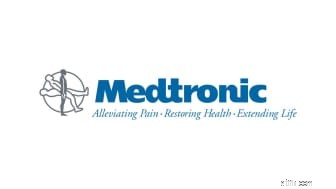
TJX কোম্পানিগুলি৷ (TJX, $45.40) প্রমাণ করে যে ক্রমবর্ধমান লভ্যাংশ প্রদানকারী ডিসকাউন্ট খুচরা চেইনে রোগী বিনিয়োগকারীদের জন্য প্রচুর অর্থ উপার্জন করতে হবে।
1957 সালে প্রতিষ্ঠিত, TJX অফ-প্রাইস চেইন স্টোর যেমন TJ Maxx, HomeGoods, Marshalls এবং Sierra Trading Post নিয়ে গঠিত। কোম্পানির লভ্যাংশ বৃদ্ধির একটি ট্র্যাক রেকর্ড রয়েছে যা 1997 সাল থেকে শুরু করে।
যদি ই-কমার্সের উত্থানের জন্য একটি খুচরা সর্বনাশ চলছে, TJX দৃশ্যত মেমো পায়নি। থমসন রয়টার্সের তথ্য অনুসারে, বিশ্লেষকরা আগামী পাঁচ বছরের জন্য গড় বার্ষিক 11.4% হারে আয় বৃদ্ধির আশা করছেন৷
যদিও অতীতের কর্মক্ষমতা ভবিষ্যতের রিটার্নের কোন গ্যারান্টি নয়, TJX এর 14.35% বার্ষিক মোট রিটার্ন গত 50 বছরে ইঙ্গিত দেয় যে এটি অবশ্যই কিছু সঠিক করছে।

একটি হাসপাতাল, ক্লিনিক বা ডাক্তারের অফিসে ঘুরে দেখুন - মার্কিন যুক্তরাষ্ট্রে বা অন্য 160টি দেশে - এবং আপনি Medtronic's দেখতে পাবেন। (MDT, $88.13) পণ্য। সর্বোপরি, এটি চিকিৎসা যন্ত্রের বিশ্বের বৃহত্তম নির্মাতাদের মধ্যে একটি, ডায়াবেটিস রোগীদের জন্য ইনসুলিন পাম্প থেকে কার্ডিয়াক সার্জনদের দ্বারা ব্যবহৃত স্টেন্ট পর্যন্ত 4,600টিরও বেশি পেটেন্ট রয়েছে৷
1949 সালে প্রতিষ্ঠিত, মেডট্রনিক কয়েক বছর ধরে বেশ কয়েকটি চুক্তির মাধ্যমে বেড়েছে। এটি 2014 সালে তার $42.9 বিলিয়ন কোভিডিয়েন অধিগ্রহণের সাথে একটি বড় লাফ দিয়েছে৷
কোম্পানিটি তার শেয়ারহোল্ডারদের পাশাপাশি রোগীদের স্বাস্থ্যের উপর দৃষ্টি নিবদ্ধ করে:Medtronic সম্পূর্ণ চার দশক ধরে প্রতি বছর তার লভ্যাংশ ক্রমাগতভাবে বাড়িয়ে চলেছে।

Walgreens Boots Alliance (WBA, $69.57) traces its roots back to a single drugstore founded in 1901 and, boy, has it come a long way ever since. It merged with Alliance Boots – a Switzerland-based health and beauty multinational – in 2014 to form the current company. In late 2017, it struck a deal to purchase 1,932 Rite Aid (RAD) stores for $4.38 billion.
Today, WBA is the second largest pharmacy chain after CVS Health (CVS). It hardly plays second fiddle in terms of prestige with Wall Street, however. In June 2018, the company replaced General Electric (GE) in the Dow Jones Industrial Average, an elite list of just 30 blue-chip firms.
Walgreens also is a member of the Dividend Aristocrats, having boosted its dividend every year since 1972.

Income investors should raise a glass to Brown-Forman (BF.B, $47.06). Yet another Dividend Aristocrat, BF.B proves that steady and rising dividends really add up over time.
Brown-Forman is one of the largest producers and distributors of alcohol in the world. Jack Daniel’s Tennessee whiskey and Finlandia vodka are just two of its best-known brands. Tequila sales – Brown-Forman features the Herradura and El Jimador brands, among others – also help fuel growth. By share price alone, BF.B delivered an annualized return of 11.53% over the past 50 years.
That’s not bad at all, but it’s the dividends that really make the difference. The company has raised its payout annually for 35 years and has delivered an uninterrupted regular payout for 73 years. In November, it hiked the annual payout by 5.1%. Add it all up, and BF.B’s annualized total return comes to nearly 14.5% over the past half-century.
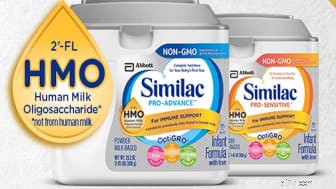
Abbott Laboratories (ABT, $68.11) has undergone a number of changes over the decades to deliver outperformance.
Among the most dramatic developments? Abbott in 2013 spun off biopharmaceutical company AbbVie (ABBV) to focus on branded generic drugs, medical devices, nutrition and diagnostic products. Some of Abbott’s better-known products include the likes of Similac infant formulas, Glucerna diabetes management products and i-Stat diagnostics devices.
The company has been expanding by acquisition since then, including medical-device firm St. Jude Medical and rapid-testing technology business Alere, both snapped up in 2017.
Abbott, which dates back to 1888, first paid a dividend in 1924. It has raised its payout for 47 straight years. The steady increases have added more than four percentage points to ABT’s total annualized return over the past half-century.
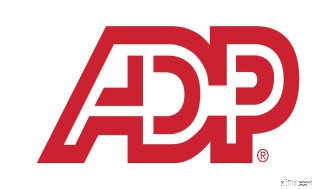
Automatic Data Processing (ADP, $131.24) is the world’s largest payroll processing firm, responsible for paying more than 39 million employees and serving more than 650,000 clients across more than 110 countries.
One of ADP’s great advantages is its “stickiness.” It’s difficult and expensive for corporate customers to change payroll service providers. That competitive advantage helps throw off consistent income and cash flow. In turn, ADP has become a dependable dividend payer – one that has provided an annual raise for shareholders since 1975.
And, yes, it also happens to be a Dividend Aristocrat. Notice the trend here?

Hormel (HRL, $41.70), yet another Dividend Aristocrat, is about as reliable as they come when it comes to income investing. The packaged food company best known for Spam has raised its annual payout every year for more than five decades.
Indeed, in November, Hormel announced its 53rd consecutive annual dividend increase – a 12% raise to 84 cents a share. The payment, to be made Feb. 15 to shareholders of record as of Jan. 14, will be the 362nd consecutive quarterly dividend paid by the company. Hormel is rightly proud to note that it has paid a regular quarterly dividend without interruption since becoming a public company in 1928.
It’s a heck of a track record, and helps explains how a seemingly modest purveyor of luncheon meat could become one of the best S&P 500 stocks of the past 50 years.

VF Corp. (VFC, $71.63) is an apparel company with a large number of brands under its umbrella, including Lee and Wrangler jeans and The North Face outdoor products. It added to its brand portfolio with the acquisition of Icebreaker Holdings – another outdoor and sport designer – under undisclosed terms in April 2018.
Analysts expect average annual earnings growth of 13.5% for the next five years, according to data from Thomson Reuters. In November, VFC announced a quarterly dividend increased of 11% to 51 cents a share.
Suffice to say, VFC’s streak of annual payout hikes, which stretches back to 1973 and has added several percentage points to its annualized total returns, appears safe.
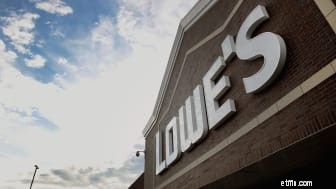
When it comes to home improvement chains, Home Depot (HD), a member of the Dow Jones Industrial Average, gets all the glory, but No. 2 rival Lowe’s (LOW, $93.87) has actually delivered superior long-term total returns.
You can chalk at least some of that up to the rising dividend. Like so many other names on this list, Lowe’s has been raising its dividend annually for a loooong time. Lowe’s has paid a dividend every quarter since going public in 1961, and that dividend has increased annually for more than half a century. Home Depot is also a longtime dividend payer, but its string of annual dividend increases only dates back to 2009.
Analysts are bullish on Lowe’s more immediate prospects – 19 out of 23 surveyed by Zacks say it’s a “Strong Buy” or “Buy” – and long-term income investors already know how remunerative the holding has been.

McDonald’s (MCD, $178.28) is a dividend – and total return – machine. The world’s largest hamburger chain’s dividend dates back to 1976 has has gone up every year ever since. That has helped earn MCD a place in the S&P Dividend Aristocrats. Given the power of its global brand, there’s little wonder that it’s a component of the Dow Jones Industrial Average too.
Changing consumers taste will always be a risk, but from the Atkins craze of the early 2000s to the current fetish for fresher ingredients, McDonald’s has always managed to maintain its edge. Over the years it has added salads to its menu, rolled out all-day breakfast and now touts never-frozen beef.
That sort of flexibility, and rising dividends, have been key to its market-beating returns over the long haul. Analysts polled by Zacks remain bullish on the name in the shorter term too.

Who would have guessed that Aflac (AFL, $44.92), the supplemental insurance company popularized by the loud, obnoxious Aflac duck, would make the list of top stocks?
Followers of the Dividend Aristocrats, that’s who. Aflac, whose roots go back to 1955, has a number of workplace offerings, such as accident, short-term disability and life insurance. But what makes AFL exciting to long-term income investors is the fact that it has raised its payout every year for more than three decades.
The company’s stock started 2018 year in horrific fashion after a report of alleged fraud sent shares into a dive. But the stock recovered after evidence of wrongdoing failed to materialize. Indeed, over the past 52 weeks, AFL is essentially flat, vs. a decline of roughly 6% for the S%P 500.
Analysts at Janney Montgomery Scott, who rate shares at “Buy,” say the company “has a significantly simpler business profile with a more reliable stream of earnings than its life insurance peers, and has shown an inflection point in the sale of its benefits products both in Japan and the U.S.”

Years of stagnant wage growth and widening income inequality have fueled tremendous growth in the number of dollar stores in the U.S., and few have done as well as Dollar General (DG, $108.77)
For 2007, Dollar General reported total revenue of $9.2 billion. A decade later, revenue swelled to $22 billion. Analysts expect the company’s 15,227 stores in 44 states to generate sales of $27.5 billion next year. Earnings are forecast to increase at an average annual rate of 14% for the next five years.
The company was founded in 1939 and changed its name to Dollar General in 1968.
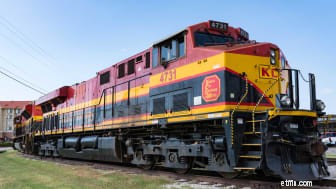
About as old-economy a company as you can get, Kansas City Southern (KSU, $96.90), a railroad that dates back to 1887, has been a total return champion over the past 50 years.
Its primary holding is The Kansas City Southern Railway, which operates in the central and southern U.S. The company also has holdings in railways in Mexico and Panama. Taken together, the company boasts the ability to ship freight virtually anywhere in North America.
KSU has a five-year track record of dividend growth, and with a payout ratio of just 24%, has room to keep raising the payout in the future. Of the 13 analysts tracked by Zacks, nine call KSU stock a “Strong Buy,” while four have it at “Hold.”

Sin stocks can be good long-term holdings. Just look at Altria (MO, $50.30), which also happens to be one of the best stocks of all time. Note that dividends have added more than 8 percentage points to its annualized total return over the past 50 years.
Altria’s origins can be traced back to a 19th century tobacco shop in London. Today, the company’s operating businesses continue to focus on tobacco including cigarettes (Philip Morris USA), smokeless tobacco (U.S. Smokeless Tobacco) and cigars (John Middleton). Altria also owns St. Michelle Wine Estates, a major wine producer. The company is best known for its iconic Marlboro brand of cigarettes, but at one time or another Altria and its predecessors had a hand in other famous names including Miller Brewing and Kraft Foods.
The stock originally joined the Dow in 1985, when the company was called Philip Morris Cos. The name changed to Altria in 2003, and the stock was replaced in the Dow in 2008. Philip Morris International (PMI) is a separate publicly traded company that was spun off from Altria in 2008 to sell cigarettes outside the U.S.

Need any more proof that Warren Buffett is the greatest long-term investor of all time? Berkshire Hathaway (BRK.B, $195.20), of which he is chairman and CEO, tops the list of the best S&P 500 stocks of the past 50 years, and it is the only one that does not pay a dividend.
Berkshire Hathaway is almost famous, perhaps even notorious, for eschewing dividends, even though many of Buffett’s coveted positions are in dividend-yielding stocks. But that makes sense when Buffett is calling the shots. Sure, Berkshire could give some cash back to shareholders for a few percentage points of extra return. But surely the greatest value investor in history can do better by shareholders by deploying that capital in something more productive.
Berkshire Hathaway’s 50-year annualized total return of nearly 20% is pretty persuasive evidence that Buffett has been right not to pay dividends all these years. What happens once the Oracle is gone is an argument for another day.
Howard Silverblatt, S&P Dow Jones Indices senior index analyst, notes that although dividends count over time, Warren Buffett is the exception. A theoretical $10,000 investment at the end of 1968 would now be worth $85 million, he notes.